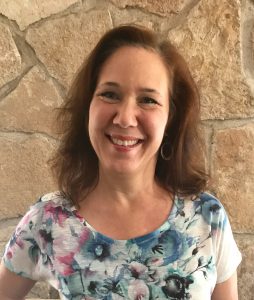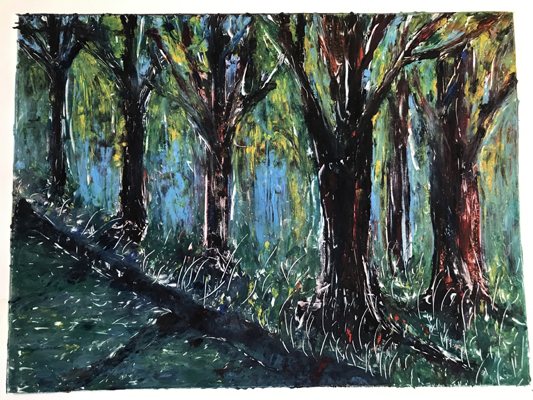July 13, 2017
 Margaret Ann Beresford, MC, ATR-BC, LPC is the founder of Free Arts for Abused Children of Arizona, which will celebrate its 25th anniversary next year and has reached more than 8,000 abused, neglected, and homeless children annually through its 800 trained volunteers. Ms. Beresford considers the program her “greatest achievement to date.” After working for twelve years in community mental health, Beresford is looking forward to “a new chapter in my life which brings me back to direct care and my art therapy roots with a focus on trauma treatment and creating resiliency.” She has held several board positions in the Arizona Art Therapy Association (AzATA) and notes that “Thankfully, Arizona just approved the art therapy licensure bill.” She values her AATA membership because “art therapy is the core thread of my professional identity and the AATA is like a home base. With my renewed focus in direct care and trauma and art therapy, the support the AATA provides will be key in this next chapter of my professional life.”
Margaret Ann Beresford, MC, ATR-BC, LPC is the founder of Free Arts for Abused Children of Arizona, which will celebrate its 25th anniversary next year and has reached more than 8,000 abused, neglected, and homeless children annually through its 800 trained volunteers. Ms. Beresford considers the program her “greatest achievement to date.” After working for twelve years in community mental health, Beresford is looking forward to “a new chapter in my life which brings me back to direct care and my art therapy roots with a focus on trauma treatment and creating resiliency.” She has held several board positions in the Arizona Art Therapy Association (AzATA) and notes that “Thankfully, Arizona just approved the art therapy licensure bill.” She values her AATA membership because “art therapy is the core thread of my professional identity and the AATA is like a home base. With my renewed focus in direct care and trauma and art therapy, the support the AATA provides will be key in this next chapter of my professional life.”
Beresford recalls in her childhood how “art played a significant role in helping me successfully navigate the challenges of childhood and adolescence by giving me an expressive outlet for intense feelings, and images while also providing a sense of accomplishment through the act of creating.” She further reveals, “I believe art therapy is so effective because it facilitates the release of traumatic images, feelings and sensations in a way that liberates the participant from continually re-experiencing them.” In conclusion, she shares that, “I look forward to the day when art therapists are viewed as preferred providers for trauma resolution for all ages and await the day when there is licensure in all 50 states.”

“Treacherous Forest: Path to Wholeness” by Margaret Ann Beresford. Monoprint. 2002.
Artist statement: “I created this piece without a plan in mind as I often do when painting for self-awareness and emotional/sensory expression. I free associated to it and came up with the title, which reminds us that we need to safely express and externalize our darkness to be able to live in the light.”
